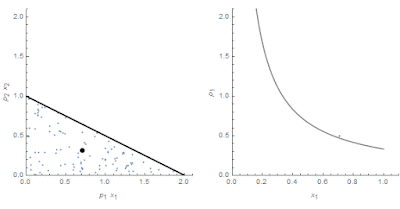Ideal and non-ideal information transfer and demand curves
I created an animation to show how important the assumption of fully exploring the state space (ideal information transfer i.e. information equilibrium) is to "emergent" supply and demand. In the first case, we satisfy the ideal information transfer requirement that agent samples from the state space accurately reproduce that state space as the number of samples becomes large:

This is essentially what I described in this post, but now with an animation. However, if agents "bunch up" in one part of state space (non-ideal information transfer), then you don't get a demand curve:




